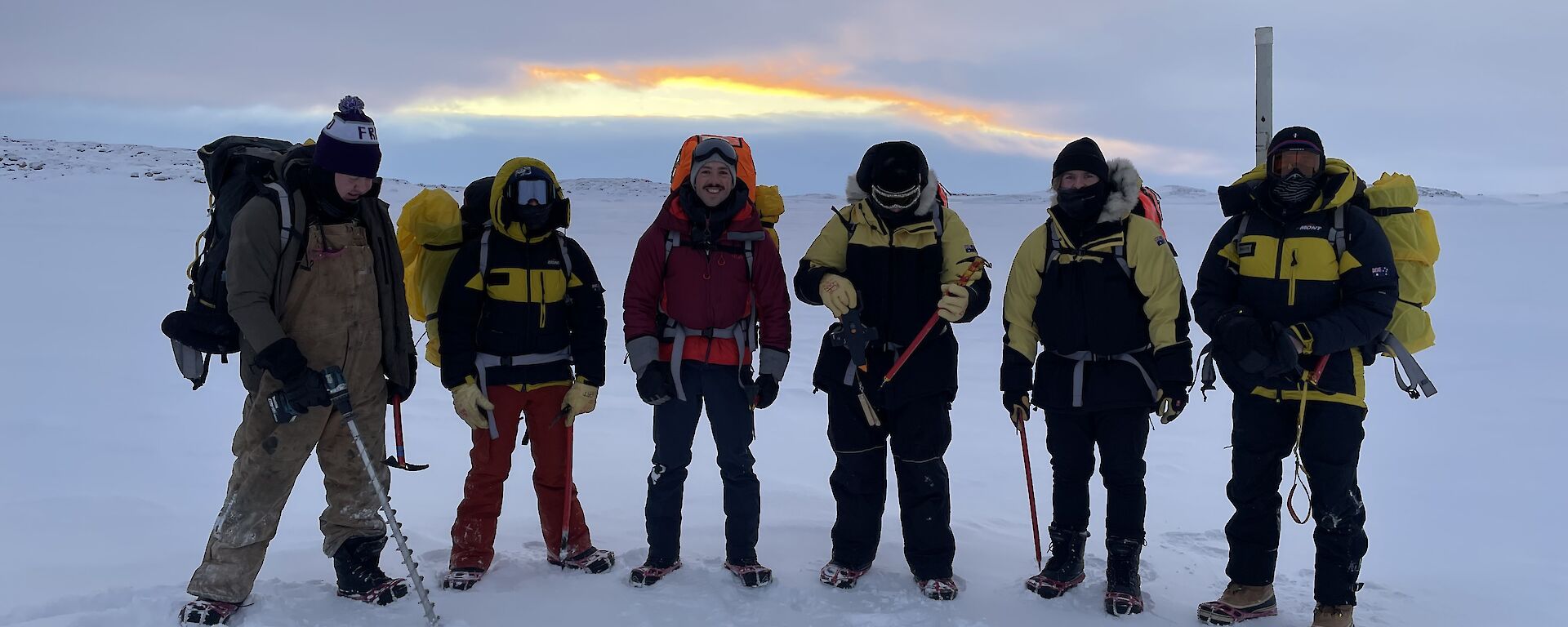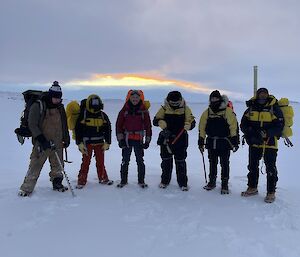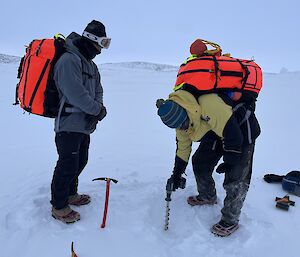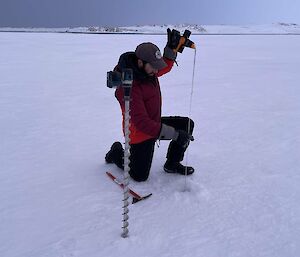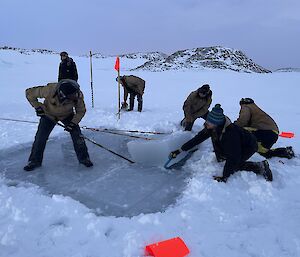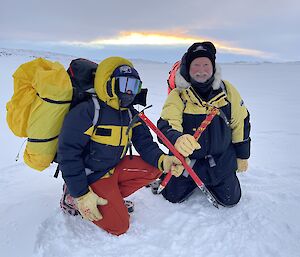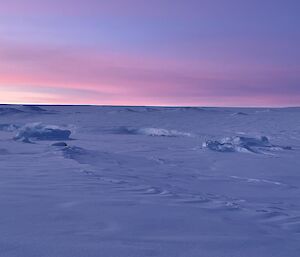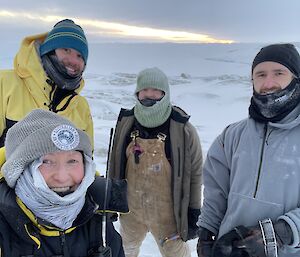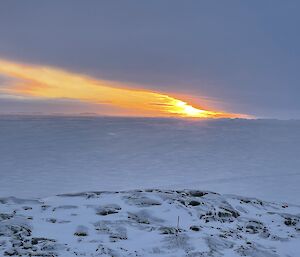On this first week of July where we celebrate NAIDOC week, Casey station is enjoying a subtle increase in daylight since our Midwinter celebrations.
Thanks to Flynn, our winter FTO (Field Training Officer) we are all sea ice travel-trained and able to enjoy the delights of this unique environment from a different perspective.
For now we have a blanket of sea ice around us, almost as far as the eye can see, with some massive icebergs way off in the distance.
At Casey the sea ice is not as reliable as it is at Davis and Mawson stations, for a variety of reasons, so travel on the sea ice tends to occur on foot rather than via station vehicles. As such, preparations for a trip means we don our winter boots, microspikes, survival packs and then off we go.
Regular sea ice thickness checks are done through the season by the sea ice monitoring team here at Casey.
Sea ice is a frozen film on the surface of the ocean. It is of uncertain and unpredictable thickness, strength, reliability and permanence due to factors like ocean swell, strong winds, air and ocean temperatures and the condition of the ice.
Under the ice the environment is stable with a temperature of -1.85°C all year, and is a teeming wonderland of sea life: fish, urchins, sea cucumbers, worms and stunningly colourful forests of anemones, sponges and vegetation that make the floor look more like a tropical coral reef rather than a frozen bay at the bottom of the world.
The sea ice is safe for foot travel when it is 20 cm thick. The most reliable way to gauge sea ice thickness is to measure by drilling with a drill or hand auger and using a specially designed measuring tape. When travelling on the sea ice we carry our survival packs, are in constant radio communication with station, and have our reliable ice axes and throw bags at the ready. The ice axe allows us to gauge the thickness of the snow on the surface of the ice and to chip a narrow trench into it with the adze. The throw rope, 15 m long, acts as a lifeline to anyone unfortunate enough to fall through the ice, which of course will not happen!!
It truly is a privilege to meander along over the sea that many of us travelled over by boat during summertime, and to be witness to the ever changing features of this precious place.
-Deirdre McCormack (Dee) - Station Doctor

